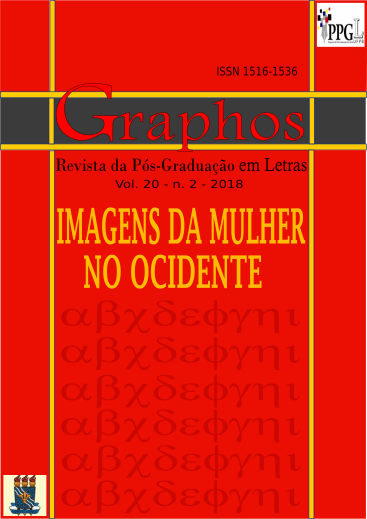The maternal oppression in Selo das despedidas, of Heloneida Studart
Keywords:
Narrative, Female Authorship, Novel, MaternityAbstract
The maternal figure results in a stereotype wrought by feelings of care and self-denial. This model is reinforced by the media, by religion and also by literature, especially written by men, who insist on conveying the image of a good mother, since the incentive to sedimentation of the social place occupied by her is one of the pillars of society. However, the maternity is not only made of flowers and maternal love, as demonstrated by Badinter (1985); to the literature made by feminine hands, through representation, as Castello Branco and Brandão (1989) show, fulfills the duty to deconstruct this idea, revealing the positive and negative sides of this role. In Selo das despedidas, Heloneida Studart evidences the maternal oppression through the exhibition of the family trajectory of the Nogueira de Alencar. In this novel, we evidence the marks of motherhood in the creation of girls-women, because it is perceived that oppression is passed on from mother to daughter successively, which leads to transgression and resistance once distinct characters sever maternal and social castration.
Downloads
References
BADINTER, Elisabeth. O amor conquistado: o mito do amor materno. Trad. de Waltensir Dutra. Rio de Janeiro: Nova Fronteira, 1985.
BEAUVOIR, Simone de. O segundo sexo: a experiência vivida, vol. 2. Trad. de Sérgio Milliet. 3. ed. Rio de Janeiro: Nova Fronteira, 2016.
BRANCO, Lúcia C.; BRANDÃO, Ruth S. A mulher escrita. Rio de Janeiro: Casa Maria Editorial: LTC, 1989.
COELHO, Nelly N. Dicionário crítico de escritoras brasileiras: 1711-2001. São Paulo: Escrituras Editora, 2002.
DALCASTAGNÈ, Regina. Literatura brasileira contemporânea: um território contestado. Vinhedo: Horizonte, 2012.
DALCASTAGNÈ, Regina. A construção do feminino no romance brasileiro contemporâneo. s/d. Disponível em: http://www.crimic.paris-sorbonne.fr/IMG/pdf/dalcastagne.pdf Acesso em: 10 ago. 2018. DALCASTAGNÈ, Regina. Espaço de cumplicidade: a representação da figura materna na literatura brasileira contemporânea. 1999. Disponível em: http://periodicos.unb.br/index.php/cerrados/article/download/13319/pdf_292 Acesso em: 13 ago. 2018. LEITE, Ivana A. Mãe, o cacete. In: RUFFATO, Luiz (org.). 25 mulheres que estão fazendo a nova literatura brasileira. Rio de Janeiro: Record, 2004. p. 213-216
SARTRE, Jean-Paul. Que é a literatura? Trad. de Carlos F. Moisés. 3. ed. São Paulo: Ática, 2004.
STEVENS, Cristina Maria Teixeira. O corpo da mãe na literatura: uma ausência presente. 2007. Disponível em:
http://www.repositorio.unb.br/bitstream/10482/3785/1/CAPITULO_CorpoM%C3%A3eLiteratura.pdf Acesso em: 10 ago. 2018.
STUDART, Heloneida. Selo das despedidas. Rio de Janeiro: Ao livro técnico, 2000.
TEIXEIRA, Níncia Cecília R. Borges. Mãe e monstro: A desconstrução da figura materna na escrita de autoria feminina. Revista Terra roxa e outras terras: Revista de Estudos literários. Londrina, v. 20, p. 46-55, 2010. Disponível em: http://www.uel.br/pos/letras/terraroxa/g_pdf/vol20/TRvol20e.pdf Acesso em: 10 ago. 2018.
TELLES, Lygia F. Uma branca sombra pálida. In: ______. A noite escura mais eu. 4 ed. Rio de Janeiro: Rocco, 1998. p. 127-142.







